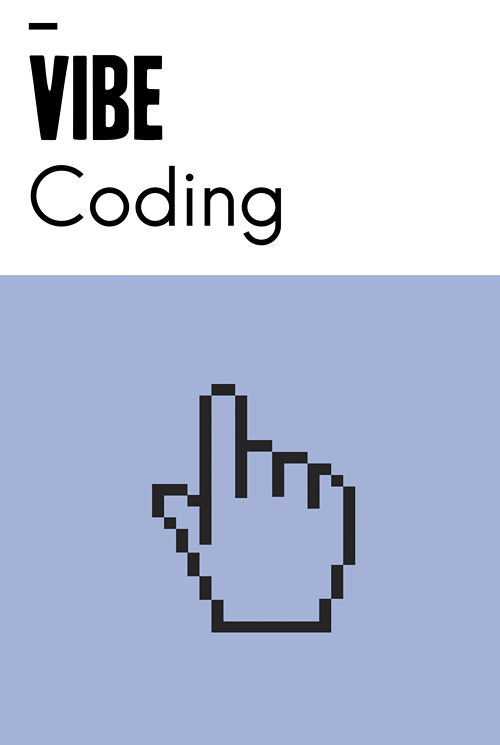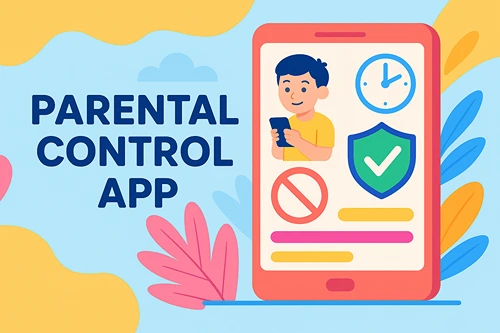Teaching Kids to Vibe Code Safely and Securely
Vibe coding represents a revolutionary, intuition-driven approach to software development that relies on Artificial Intelligence (AI) and natural language prompts to generate functional applications.
Coined by AI researcher Andrej Karpathy in February 2025, this chatbot-based approach allows developers to describe projects or tasks to large language models (LLMs), which then generate code based on these prompts.
For young learners, vibe coding offers unprecedented appeal through instant feedback, creative play opportunities, and the thrilling experience of quickly building working applications. However, this same fast-track to software development can expose children to real risks, including data privacy concerns, security vulnerabilities, and the development of poor coding habits.
This article explores how parents and educators can harness the profound benefits of vibe coding while proactively mitigating these inherent risks for children engaging with AI-powered development tools.
The ‘Vibe’ of Coding: How Kids Are Embracing AI-Powered Development
What is Vibe Coding?
Vibe coding fundamentally transforms how we approach software development by emphasizing intuition and ‘feeling your way through code’ rather than solely relying on rigid syntax and programming rules. This method combines generative AI models with smart coding assistants, making software development more dynamic and natural by integrating coding agents into programming environments and eliminating the need to manually write every line of code.
The core mechanism involves utilizing large language models to produce functional code from natural language text prompts, effectively allowing users to ‘speak’ their desired applications into existence. In its purest form, vibe coding involves giving in to the ‘vibes,’ embracing exponential speed, and often accepting the AI’s output without thoroughly reading or understanding every line.
This represents a stark contrast to traditional coding methodologies, where vibe coding is fluid and expressive like ‘freestyle sketching,’ traditional programming resembles studying from ‘school textbooks’.
Popular AI-powered tools making this intuitive method accessible include Replit, Cursor, GitHub Copilot, and v0. These vibe coding applications are designed to make developers feel superpowered, providing unprecedented capabilities for rapid application development.
Why Vibe Coding Resonates with Young Learners
Vibe coding skills are likely to be important ones in the future as part of a portfolio of AI literacy skills. With 83% of companies stating AI is the top priority in their business plans, it’s developing these competencies could be highly beneficial.
Accessibility and Lowered Barriers
Rather than replacing coding education, AI tools open exciting opportunities by changing how we approach teaching programming. Vibe coding democratizes access to software development by empowering non-technical individuals and beginners to build functional applications without extensive traditional coding knowledge, significantly lowering barriers to entry. For beginners, there’s no better way to open your eyes to what’s possible to achieve with code itself.
Focus on Creativity and Intuition
This methodology emphasizes understanding patterns, recognizing flows, and encouraging a ‘feel first, polish later’ approach. This resonates particularly well with children who may have experience in music, art, or language learning, as it encourages learning to code like you learn a language: through immersion and practice rather than memorization of syntax rules.
Accelerated Learning and Instant Gratification
Children can prototype ideas and witness working results in days rather than months, leading to significant satisfaction and confidence building. Examples of what kids are creating include personalized games, themed chatbots (such as Harry Potter conversational bots), engaging 2D games, sleek user interfaces, immersive 3D worlds, and interactive gaming experiences reminiscent of Pokémon Go.
Problem-Solving and Real-World Application
Young developers can apply vibe coding to design video games, create digital animations, launch simple businesses, or develop tools addressing community problems, such as climate tracking applications or tutor-finding platforms. This practical application helps children see immediate relevance in their coding efforts.
Engaging and Playful Environment
Vibe coding fosters exploration, experimentation, and learning from mistakes, often transforming programming into an enjoyable parent-child activity. The experience becomes more like dancing, less dictation, creating an environment where creativity flourishes alongside technical skill development.
Navigating the Pitfalls: Challenges in Vibe Coding Education for Children
Risk of Shallow Understanding and Undermining Fundamentals
While vibe coding accelerates creation, over-reliance on AI tools can lead to shallow understanding of core programming concepts, potentially undermining foundational skills new developers need for long-term success. Beginners might struggle to understand, explain, or reason about AI-generated code, making debugging and ongoing maintenance particularly challenging when issues arise.
AI code generation models pose both direct and indirect cybersecurity risks, and research consistently shows that AI-generated code often contains mistakes requiring human correction, correction that demands basic programming knowledge to implement effectively. Without foundational understanding, children can’t properly evaluate or improve the code they’re generating.
Security Vulnerabilities and Unvetted Code
Vibe-coded applications, when not properly vetted, can be vulnerable to hacks and security flaws, potentially exposing users to significant risks. AI coding assistants accelerate development, but they also introduce security risks through the code they generate. Recent research has shown that AI-generated code introduces security vulnerabilities in 45% of cases.
AI tools can inadvertently suggest non-existent or malicious libraries, referred to as ‘package hallucinations’, which pose serious security threats if blindly trusted and implemented. The convenience offered by AI can obscure underlying reasons for code breakage, leading to superficial problem-solving rather than development of deep debugging skills.
Generative AI risks have risen considerably alongside the increased use of AI coding assistants, making security awareness crucial for young developers.
Over-reliance and Misinterpretation of Intuition
Excessive dependence on AI can hinder children’s development of crucial problem-solving and critical thinking skills essential for robust programming. Beginners might misinterpret the ‘feeling your way’ aspect of vibe coding as pure guesswork rather than cultivated logical intuition built upon understanding fundamental principles.
It’s important to acknowledge that not all learners thrive in free-flow, less structured environments: some require clear rules and guidelines before they can embrace fluidity and creative expression in their coding journey.
Complexity of Multiple Tools
Vibe coding often necessitates integrating several AI-powered tools and platforms simultaneously, including Cursor, v0, Gemini, Replit, Lovable, and Bolt. This multi-tool approach can become confusing and overwhelming for beginners, potentially slowing progress and causing frustration as they navigate different interfaces, capabilities, and workflows.
Best Practices for Safe and Secure Vibe Coding Education
Emphasizing Foundational Skills Alongside AI Tools
Successful vibe coding education must integrate traditional coding fundamentals from day one rather than replacing them. This includes learning basics like HTML, CSS, and JavaScript, which provide strong foundations and enhance problem-solving capabilities. Students should learn to read, reason about, and critique AI-generated code, ensuring they understand the ‘why’ behind AI outputs, not just the ‘how’ to prompt for them.
For experienced programmers, vibe coding is an amazing way to develop intuition for what LLMs can and can’t do. Curricula should evolve to include ‘prompting fundamentals’ as a core skill alongside traditional programming fundamentals to effectively communicate with AI systems. Regardless of AI advancements, software architecture knowledge remains crucial for building scalable, secure, and maintainable applications.
Implementing Safe and Age-Appropriate Workflows
Utilize Sandboxed Environments
Encourage coding practice within interactive platforms and sandbox environments like Replit, CodePen, or Glitch, which offer safe spaces for exploration and experimentation without impacting real-world systems or exposing sensitive data.
Promote ‘No Personal Information’ Rules
Teach children the critical rule of never inputting personal or sensitive information into AI tools or applications they generate. Encourage the use of fake-data prompts to simulate real-world scenarios without compromising privacy. This fundamental rule protects both the child and others who might use their applications.
Clear Prompt Engineering
Guide students to craft precise and context-specific prompts, reinforcing that AI output quality directly depends on input clarity and detail. Teaching effective prompting becomes a foundational skill as important as traditional programming concepts.
Introducing Simple Secure-Coding Basics
Educate on Input Validation
Teach children about input validation: the importance of checking and sanitizing any user input to prevent common vulnerabilities and unexpected behaviors. This concept can be explained through simple examples like ensuring age inputs are reasonable numbers rather than negative values or text.
Minimal Permissions
Introduce the concept of minimal permissions, teaching kids to configure applications with only the least necessary access rights to function properly, thereby reducing potential security risks. This principle applies whether building web applications, mobile apps, or desktop software.
Dependency Caution
AI coding security rules help developers write safer code with tools like Copilot and Cursor, reducing common security risks. Warn against blindly trusting AI-suggested external libraries to avoid ‘package hallucinations’ and the introduction of potentially malicious code. Teach verification practices for third-party dependencies.
Ethical Review
Introduce basic concepts of ethical coding, emphasizing awareness of potential biases and privacy concerns in AI-generated solutions. Policymakers, industry, and educators must ensure responsible AI implementation that respects children’s well-being, privacy, and safety.
Establishing Classroom Guardrails and Supervision
Peer Programming and Mentorship
Encourage collaborative learning through pair programming and provide access to experienced mentors who can offer real-time feedback and guidance, fostering shared learning rhythms and knowledge exchange.
Peer Code Review Checklists
Implement structured peer code review checklists enabling students to critically assess each other’s AI-generated code for quality, maintainability, and basic security flaws. This builds analytical thinking and collaborative problem-solving skills.
Teacher QA Steps and Deployment Freeze Rules
Ensure all projects undergo teacher quality assurance steps before deployment. Establish deployment freeze rules preventing any code from going live without explicit adult supervision and approval, particularly for public-facing applications that could impact others.
Focus on Process over Product
Emphasize the learning journey, development of critical thinking, and debugging skills as paramount rather than solely focusing on final outputs. This approach builds sustainable learning habits and a deeper understanding.
Conclusion
Vibe coding offers a powerful, engaging, and creative pathway into technology for children, democratizing access to software development while fostering creativity and rapid prototyping. We should combine the creative freedom and acceleration capabilities of vibe coding with strong emphasis on foundational knowledge, responsible AI use, security awareness, and supervised practice.
This way, educators and parents can empower the next generation to become confident, ethical, and skilled software creators.
About the Author:
Ryan Harris is a copywriter focused on eLearning and the digital transitions going on in the education realm. Before turning to writing full time, Ryan worked for five years as a teacher in Tulsa and then spent six years overseeing product development at many successful Edtech companies, including 2U, EPAM, and NovoEd.





